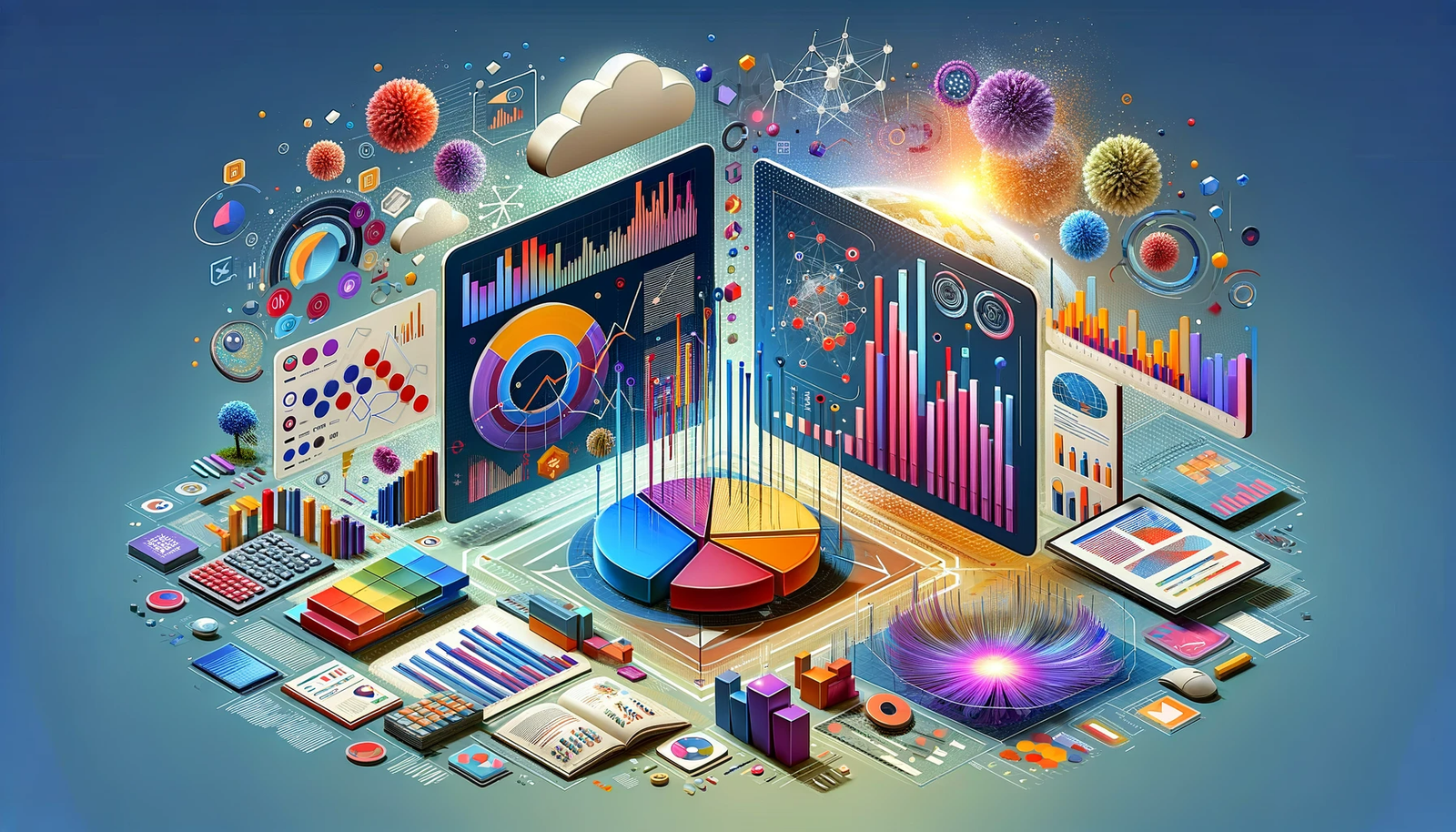Data visualization transforms raw data into visual formats, making complex information easier to understand and interpret. This guide introduces various types of data visualizations, explaining their purposes and applications in a user-friendly manner.
A World of Visual Data
In an age where data is abundant, understanding and presenting it effectively is crucial. Data visualization serves as a bridge between complex data sets and human comprehension. Let’s explore the different types of visualizations that bring data to life.
1. Graphical Charts
Graphical charts are a cornerstone of data visualization. They include:
- Line Charts: Ideal for showing trends over time. Line charts connect individual data points to form a line, making them perfect for tracking changes. Statistics How To provides more insights.
- Bar Charts: Useful for comparing quantities across different categories. Bar charts use horizontal or vertical bars to represent data values. Math is Fun offers a basic understanding.
2. Tabular Data Presentation
Tables present data in a structured, grid-like format. They’re excellent for detailed data comparison and easy reference. For a deeper dive into using tables effectively, Microsoft’s guide can be helpful.
3. Mapping Data Geographically
Geospatial visualizations represent data in relation to geographic locations. These include:
- Heat Maps: Show density or intensity of data, using color variations. Heat maps are particularly useful in geographical studies and website user behavior analysis. Learn more about heat maps at Displayr.
- Choropleth Maps: Use different shades or colors to represent data values in specific geographic areas. The GIS Geography website explains choropleth maps in detail.
4. Infographics: Data Plus Design
Infographics combine data with graphic design to tell a story. They’re effective for educational purposes or for making complex data more digestible. Canva explores the craft of creating infographics.
5. Interactive Dashboards
Dashboards aggregate multiple data visualizations into a single interface, often interactive, allowing for real-time data monitoring and analysis. Tableau provides insights into the use of dashboards.
Specialized Visualization Types
Some data requires specific visualization types for better clarity:
- Scatter Plots: Ideal for showing relationships between two variables. Each dot on a scatter plot represents a data point. Chartio offers more on scatter plots.
- Gantt Charts: Common in project management, Gantt charts show project timelines and progress. ProjectManager.com offers insights into Gantt charts.
- Bullet Graphs: These are bar graphs enhanced to show performance against a target. They are compact and informative. Perceptual Edge explains bullet graphs in detail.
- Treemaps: Useful for displaying hierarchical data, treemaps represent data as nested rectangles. Highcharts provides a detailed look at treemaps.
- Box-and-Whisker Plots: These plots show data distribution and are effective in highlighting outliers. Khan Academy explains their use.
Conclusion: The Power of Visual Data
Data visualization is not just a tool but an essential aspect of modern data analysis. By transforming complex datasets into comprehensible visual formats, it allows for more effective communication, better decision-making, and deeper insights into the underlying data.
For those looking to enhance their data visualization skills, resources like DataCamp and edX offer courses ranging from beginner to advanced levels, providing valuable knowledge in this increasingly important field.



One thought on “Types of Data Visualization: A Comprehensive Guide”